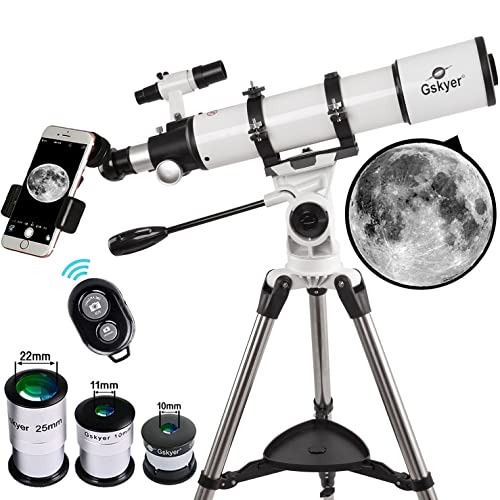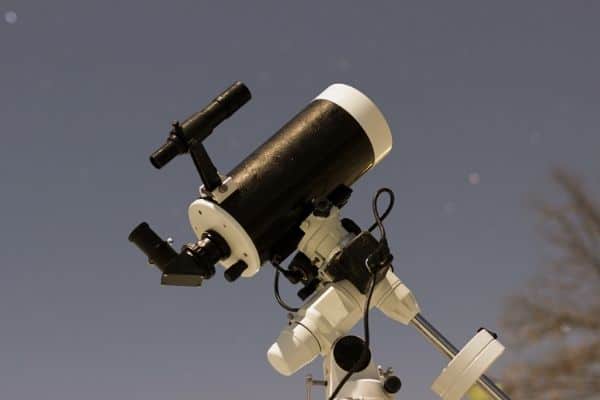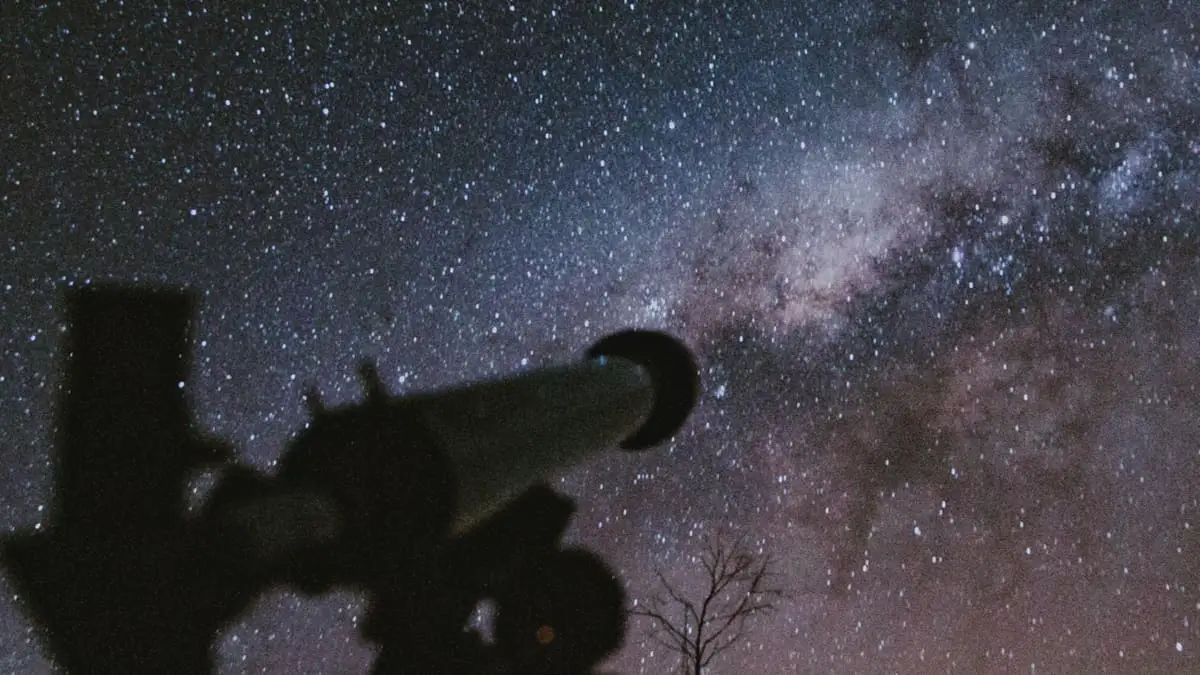Best Telescope for Deep Space Astrophotography | Top 5 Picks for 2024
Even when you look through some of the bigger telescopes at your local astronomy club’s star parties, deep space objects like nebulae and galaxies are just “faint fuzzies”, they look nothing like the crisp, colorful images NASA’s Astronomy Picture of the Day features.
Fortunately, you don’t need a space telescope to get spectacular images of cosmic objects deep in our galaxy — or beyond. When you attach the DSLR or mirrorless camera that you already have to a telescope, like our top-choice Gskyer 600x90mm Refractor Telescope, you can capture your own inspiring image of the Heart Nebula or the Pinwheel Galaxy!
Related post: 6 Best Telescopes for Beginners
Best for All-Round Deep Space Imaging — Gskyer 600x90mm Refractor Telescope

Gskyer 600x90mm Refractor Telescope
A high-quality refractor telescope that minimizes chromatic aberration.
The Gskyer 600x90mm Refractor offers the best balance of optical quality and price for most astrophotographers. The design does a decent job of focusing on red, blue, and green wavelengths on your camera’s sensor. This minimizes chromatic aberration, the purple fringing caused by lenses bending different colors of light at different angles.
Now, let’s be realistic. Some users are complaining that it DOES have some aberration. But the thing is, you can’t expect zero aberration at this price point. For that, you’d need to shell out thousands of dollars!
So why do we consider it the best telescope for deep space astrophotography in this price range? It offers a field of view that lets you capture many of the nebulas in the Milky Way. Getting the full extent of the largest deep space objects, such as the Orion Nebula or the Andromeda Galaxy, may require a full-frame camera.
The f/6.7 ratio between the telescope’s 90mm aperture and its 600mm focal length makes this telescope moderately slow. However, significantly faster light-collecting telescopes can cost thousands of dollars.
Best for Budget Astrophotography — Orion 9836 120mm f/5.0 Refractor Telescope Optical Tube Assembly

Orion Observer 80ST Refractor
An 80 mm aperture refractor telescope that is just enough to get you going as a beginner.
Orion’s Observer 80ST 80mm Refractor Telescope might be the better choice if you’re just testing the astrophotography waters. It offers good performance for the price and the fields of view will still amaze you, even though they might not be enough for seasoned astrophotographers.
The 80mm aperture of the Orion soaks in almost as much light as the above Gskyer. It also has a slower f/5 focal ratio so you need more exposure time for each image. That can come in handy if you aren’t using a high-priced mount.
Beware of the dreaded chromatic aberration, every astronomer’s nightmare! Straight out of the camera, you’ll see a little color fringing around bright stars, most of which you can remove when post-processing.
Best for Intermediate-to-Advanced Astrophotographers — Explore Scientific ED 102 Classic White Essential Series

Explore Scientific Air Spaced Triplet ES-ED10207-01
Delivers brighter, higher-contrast images.
The Explore Scientific ED102 Essential is best for more experienced astrophotographers. The large 102mm aperture and 714mm focal length combine to deliver a moderate f/7 focal ratio. Higher-quality glass and more advanced coatings deliver even brighter, higher-contrast images than the Gskyer.
Of course, the price might seem hefty, but it’s worth every penny if you got tired of simplistic photos of the moon and the nearby planets!
You’ll find that this telescope delivers a slightly narrower field of view than the previous two telescopes. However, this only becomes an issue with the largest deep-sky objects. Stitching together images of adjacent parts of the object to create a mosaic lets you capture these extended objects.
Best for Combining Photography & Astronomy — Canon EF 300mm f/4L IS USM Telephoto Fixed Lens for Canon SLR Cameras

Canon EF 300mm f/4L IS USM Telephoto Fixed Lens
A telephoto lens with incredible deep-space imaging capability; particularly suited to wide-field images.
Using a telephoto lens rather than a dedicated telescope can justify the cost of high-quality optics, a prime lens such as Canon’s EF 300mm f/4L IS USM or similar lenses from your camera’s manufacturer lets you enjoy daytime photography as well as your nighttime astrophotography.
With a fast f/4 focal ratio and high-quality optics, these lenses let you capture wide-field images of deep space objects. You’ll get the further reaches of Andromeda’s spiral arms and the fainter edges of the Orion Nebula within your camera’s frame. You could even fit both the Heart Nebula and the Soul Nebula in a single shot.
Best for Combining Deep Space & Planetary Astrophotography — Celestron NexStar 4SE Computerized Telescope

Celestron NexStar 4SE Computerized Telescope
Maksutov–Cassegrain reflecting telescope package that includes a Go-To motorized tracking mount.
Advanced astrophotographers will appreciate the flexibility offered by the Celestron NexStar 4SE. This Maksutov–Cassegrain (similar tech to Schmidt-Cassegrain!) reflecting telescope has an 4” (102mm) aperture and 1325mm focal length that combine for an f/13 focal ratio. The aperture and focal length don’t sound like much in their own right, but wait until you see the result! You’ll be able to see deep space objects with an incredible clarity, which is rare in this price range.
The great thing is that this telescope, while powerful enough to tick the boxes for intermediate to advanced users, is also computerized and will automatically detect and track objects, which makes it easy enough for newbies too. Plus, the excellent software will help beginners learn about astronomy in a fun and interactive way.
You’ll get automatic Go-To mount that needs next to no setup, and other accessories.
What to Consider When Buying a Telescope for Deep Space Astrophotography
Type of Telescope
The all-lens design of refracting telescopes (and telephoto camera lenses) produces bright, high-contrast images. This can reduce the exposure time you need for deep space astrophotography. Refractors are also much easier to set up and maintain than other telescope designs.
Reflecting telescopes rely on mirrors to collect light from the night sky. Compared to refractors, reflectors deliver much larger apertures for the price, but they tend to have much slower f-ratios. You’ll need longer exposure times to get faint details which, in turn, requires a much more stable and reliable mount.
Telescope’s Specifications
We’ve discussed the trade-offs of telescope specs throughout the article. In general, telescopes with larger apertures, shorter focal lengths, and lower f-ratios require more expensive, high-quality optics to minimize distortion in your images.
In astrophotography, the focal length of your telescope and the size of your camera’s image sensor determine the field of view. For all of the telescopes I’ve mentioned, a full-frame camera will provide a larger field of view than an APSC or Micro Four Thirds camera.
Where You Use Your Telescope

Backyard astrophotographers have the luxury of keeping a large telescope permanently mounted to a heavy mount. You just wheel everything out at night and get started. If your astrophotography requires driving to a dark sky site, however, you’ll need to factor in the portability of your equipment. That’s where small refractors like the Vixen Optics ED20SF have the advantage.
Frequently Asked Questions
Some of the recommendations don’t include mounts, which one should I get?
A good astrophotography mount has to rotate the telescope smoothly and accurately track the night sky all while supporting your telescope, camera, and other equipment. The Sky-Watcher EQM-35 is a good beginner-to-intermediate motorized mount that can support up to 20 lbs. of gear.
Do I have to use a DSLR?
Your existing camera lets you get started quickly, but the sensor’s built-in RGB filters block much of the light your telescope gathers. A monochrome astronomical camera like the ZWO ASI1600MM Pro, combined with external color filters, lets you get all of the faint detail in glowing nebulae.
What deep space objects can I target?
Planning is critical for astrophotography. One helpful tool is the Telescopius’ telescope simulator. Using your telescope’s focal length and the size of your camera’s image sensor, it will show you how deep space objects fit in your system’s field of view.
Do I have to process my astrophotographs?
Collecting your data is only half of the journey in astrophotography. The other half is the image processing needed to tease out the details and colors of deep space objects. Michael Covington’s Digital SLR Astrophotography and Charles Bracken’s Deep-Sky Imaging Primer are handy references that will remain useful even as your skills grow.
Last update on 2024-04-24 / Affiliate links / Images from Amazon Product Advertising API









